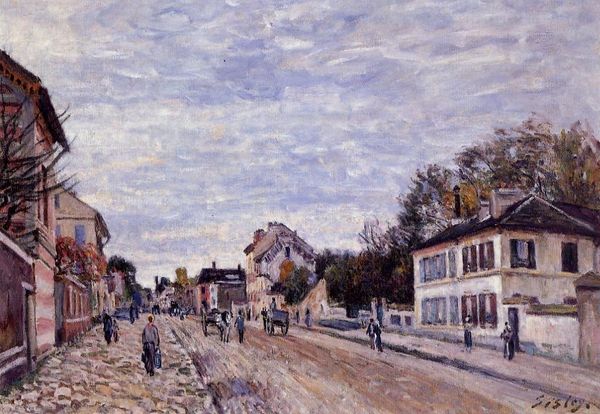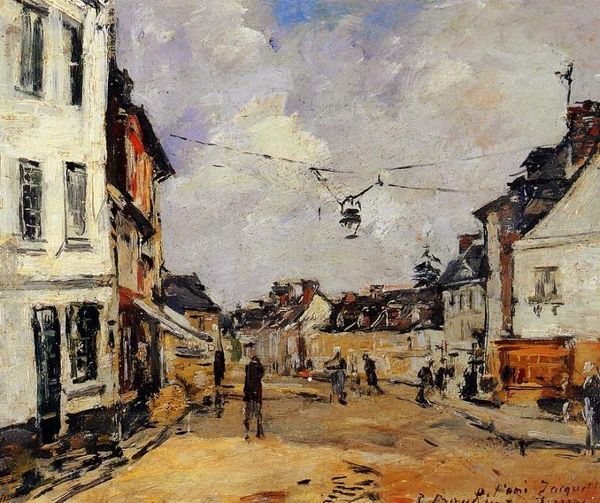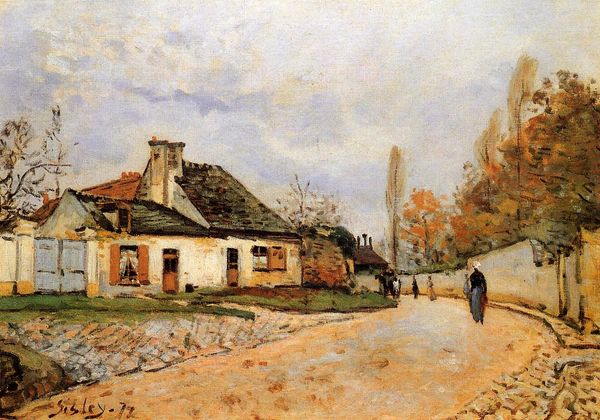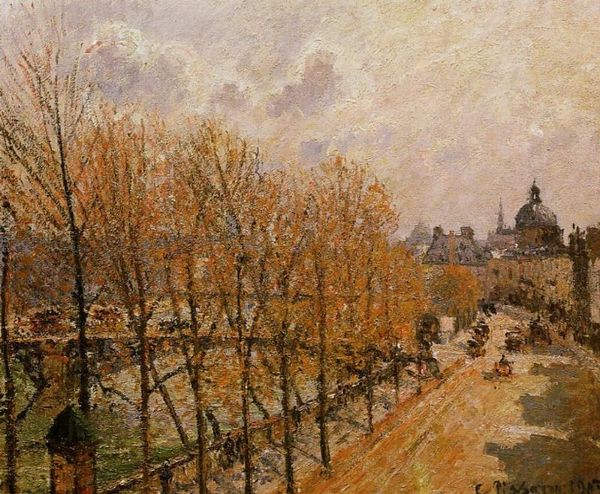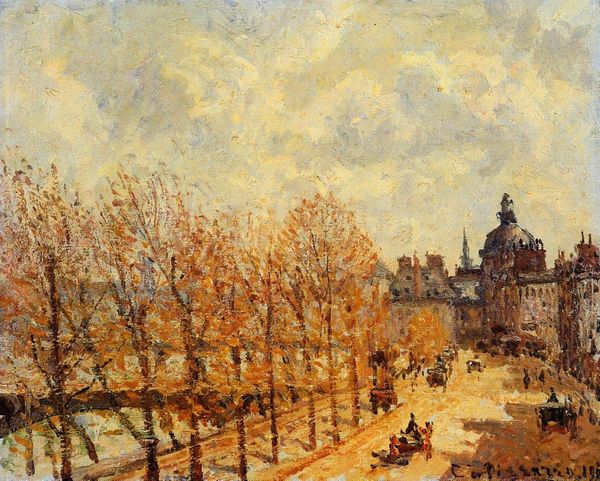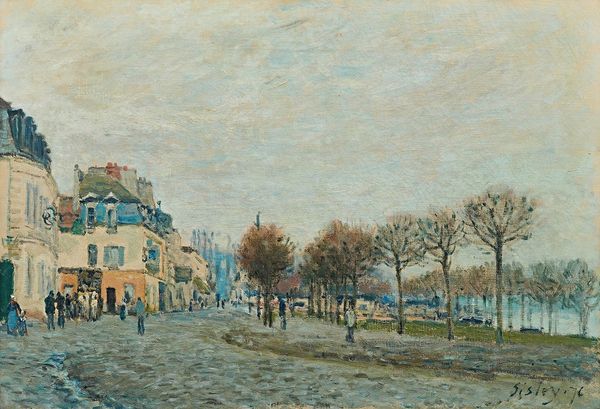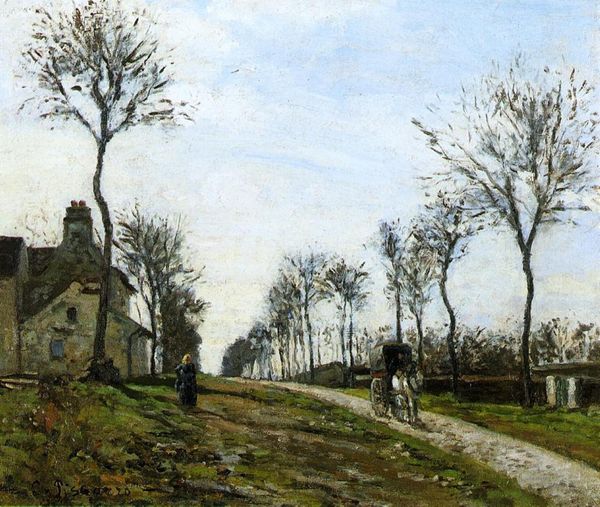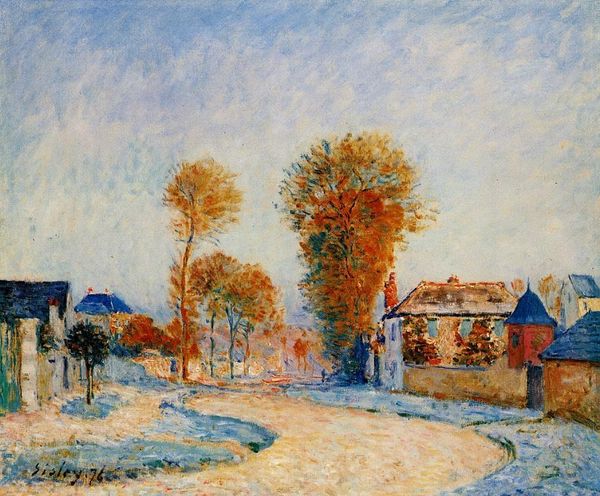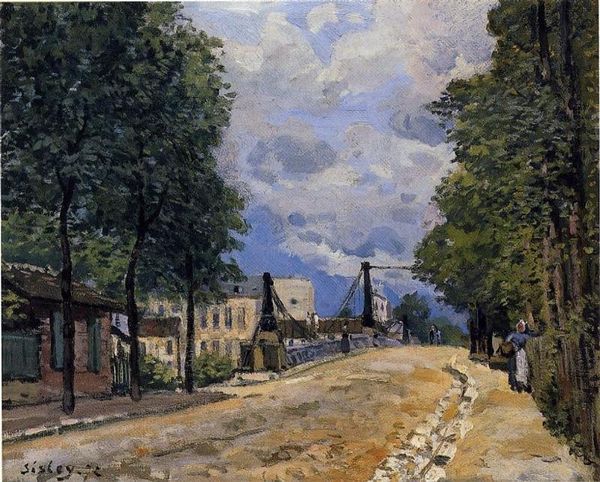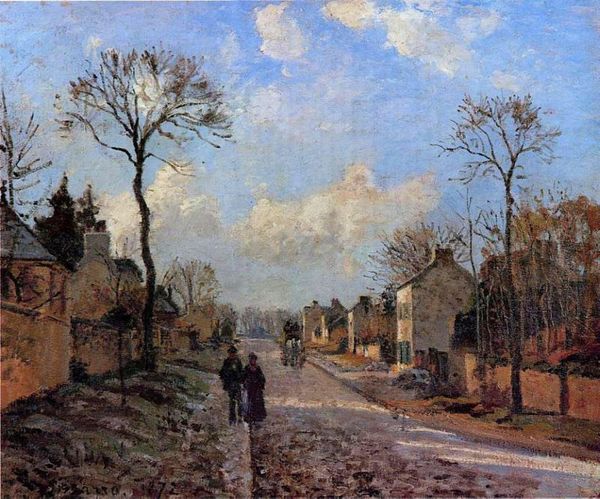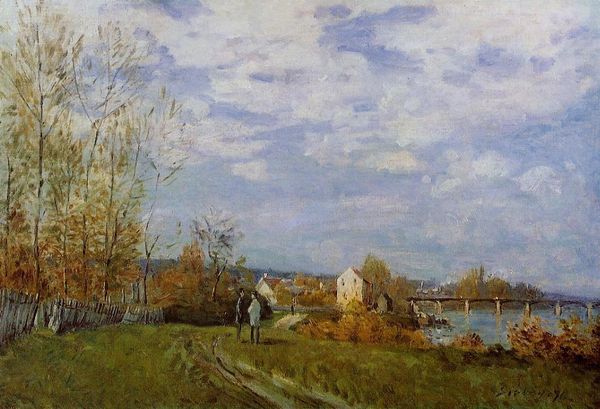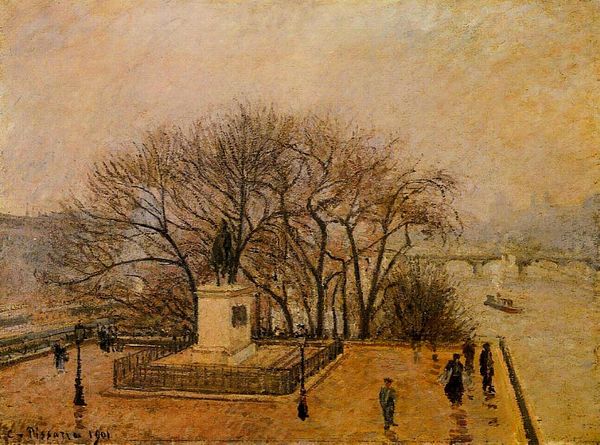
painting, plein-air, oil-paint
#
portrait
#
painting
#
impressionism
#
impressionist painting style
#
plein-air
#
oil-paint
#
landscape
#
house
#
impressionist landscape
#
oil painting
#
cityscape
#
building
Dimensions: 50 x 61 cm
Copyright: Public domain
Curator: Welcome. Before us hangs "The Flood at Port Marly," an 1876 oil on canvas crafted by Alfred Sisley. The work, a key example of Impressionist landscape painting, currently resides at the Thyssen-Bornemisza Museum in Madrid. What strikes you initially? Editor: You know, at first glance, it's surprisingly...gentle for a flood scene. The sky is beautifully open. It’s almost placid, that light blue melding into those pillowy white clouds reflecting the watery surface. The water looks deceptively calming. I'd say it evokes a melancholic, even resigned sort of atmosphere. Curator: An interesting reaction! The recurrent theme of floods in art often relates to cleansing, devastation or punishment – like the biblical deluge myth—pointing toward ideas about purification or humanity humbled by nature. The water becomes a liminal space in cultural memory. Editor: Maybe Sisley wanted to downplay the potential trauma. Perhaps the locals had seen this all before, the Seine casually swallowing their doorsteps every so often. Note how the figures in the scene are standing around, as if commenting the weather while drinking tea. Curator: Precisely! Sisley was not after stark realism. The muted colors, soft brushstrokes…even the bare trees… They seem less about a literal record and more about evoking a feeling, the transient effect of light on water. The subtle repetition of the tree line mirroring its own image on the flood offers us an alternative to devastation, more like an odd and picturesque, even domestic scene. Editor: Yes, more "quaint inconvenience" than apocalyptic disaster! I appreciate how he balances the detail—the architecture on the left—against the almost ethereal trees and sky on the right. There is an acceptance of something recurrent, with that man on the pier watching quietly as if nothing would alter his daily journey through life. It all pulls back to a comforting kind of human scale that transforms tragedy into temporary. Curator: His choice of muted, pale colours reflects a conscious effort to communicate the quiet beauty even within disruptive weather events. Editor: Well, thank you for making me notice the nuances, far from the "noise" of disaster, here’s a "visual hum". Curator: Indeed. Perhaps it is that subtlety that continues to invite closer contemplation and interpretation, beyond easy categorizations.
Comments
No comments
Be the first to comment and join the conversation on the ultimate creative platform.
